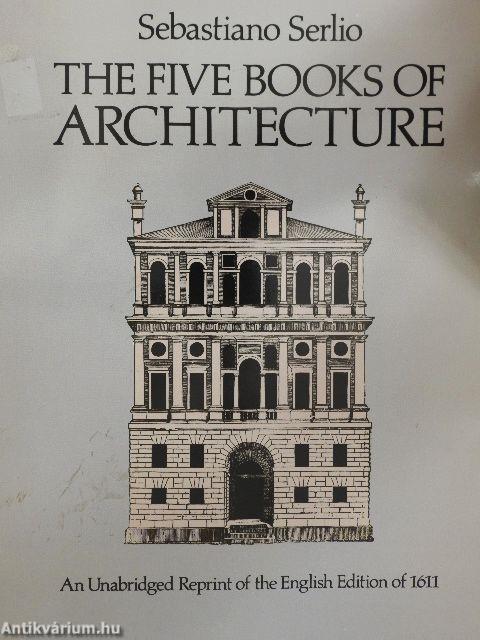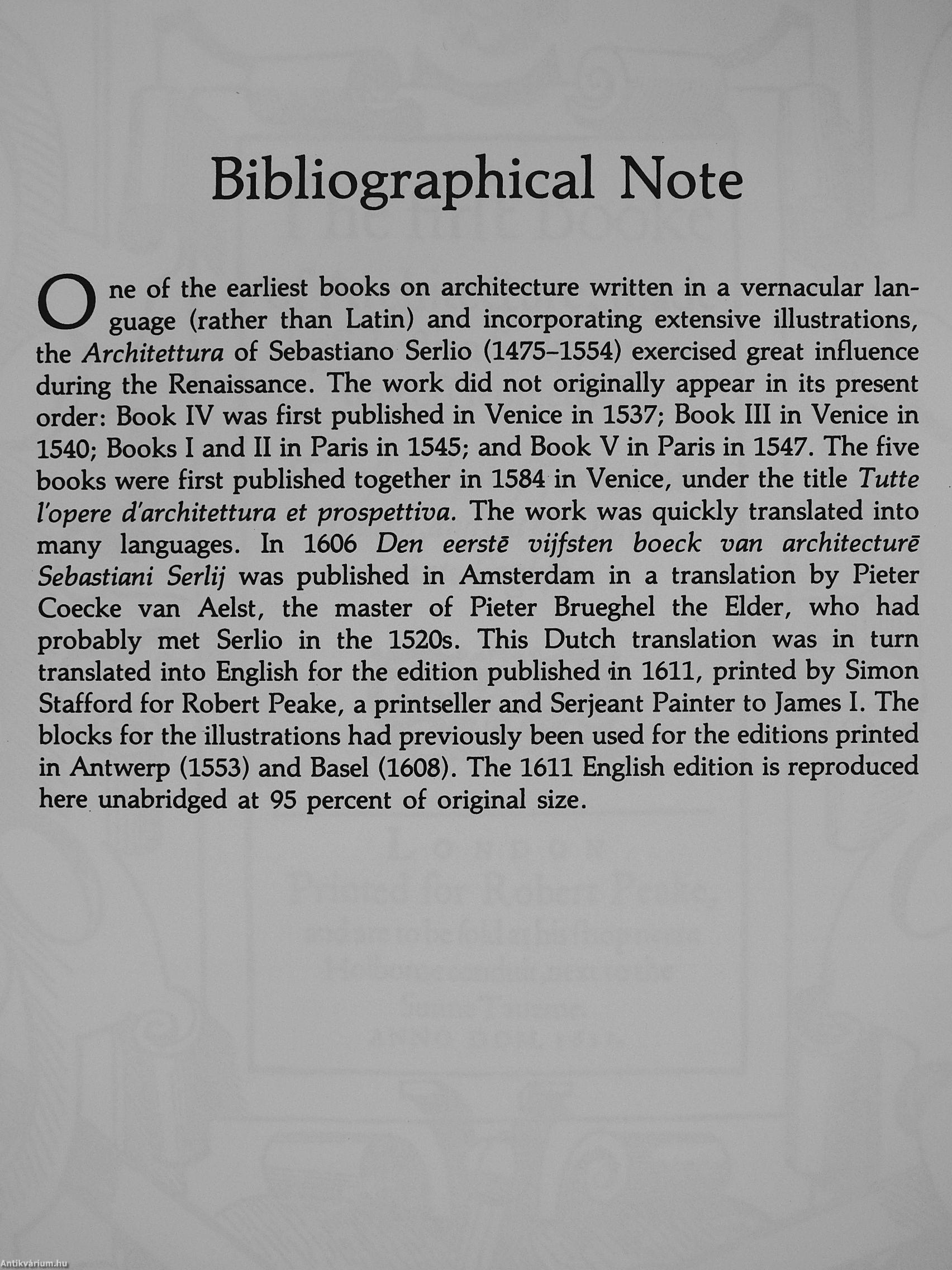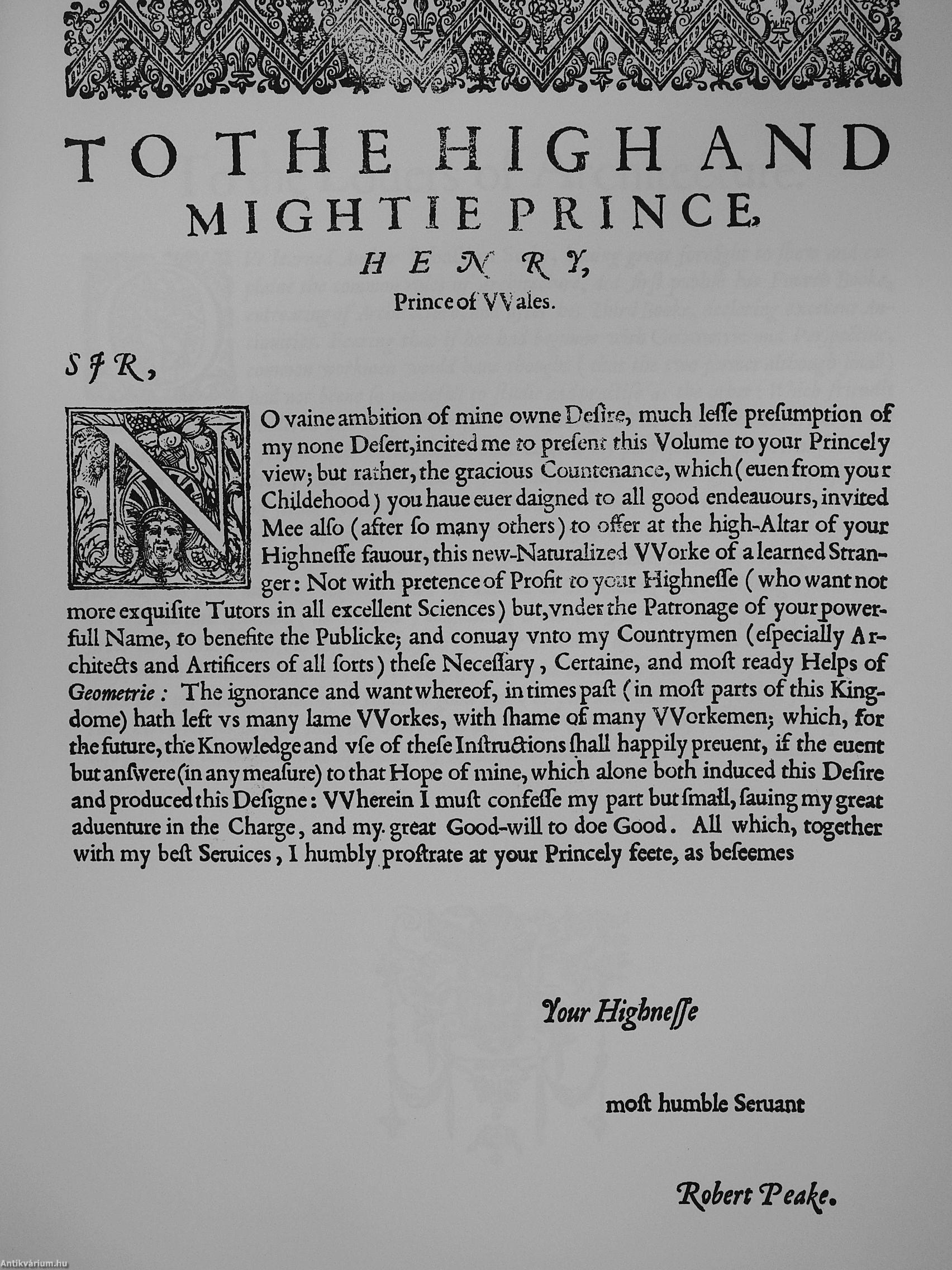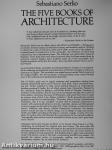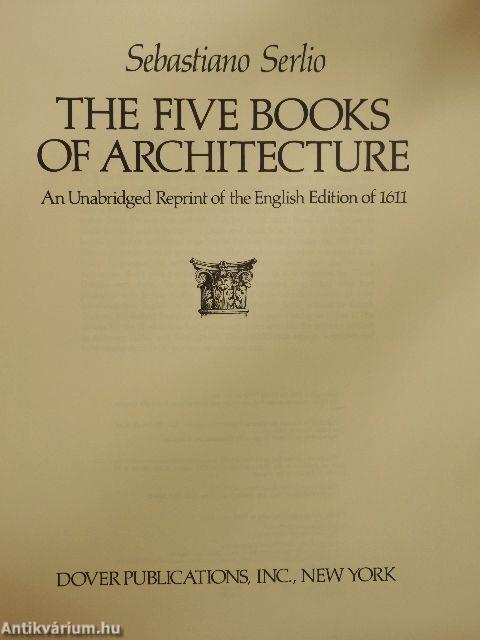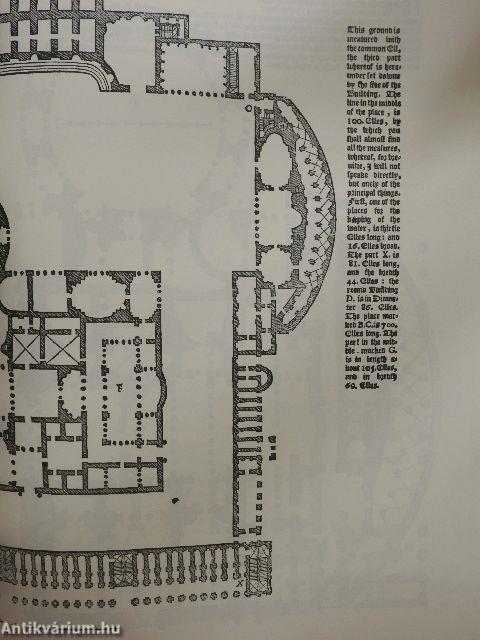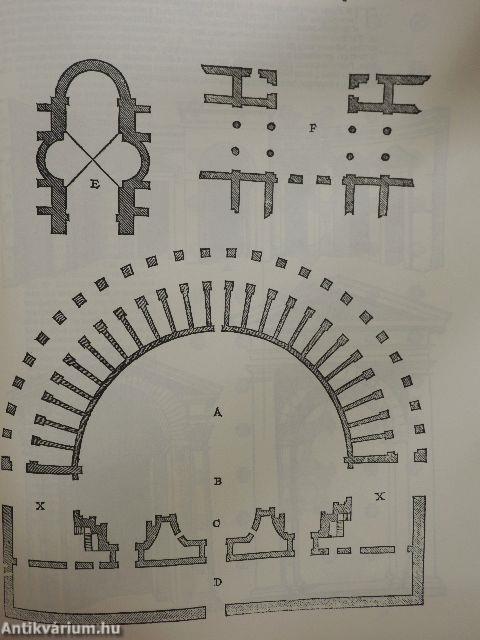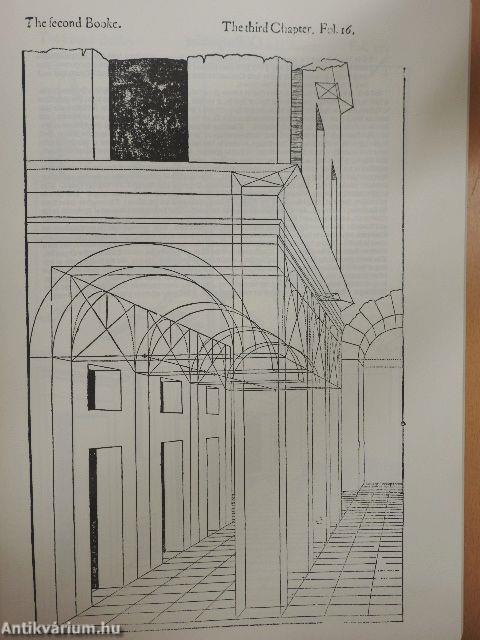1.067.715
kiadvánnyal nyújtjuk Magyarország legnagyobb antikvár könyv-kínálatát

VISSZA
A TETEJÉRE
JAVASLATOKÉszre-
vételek
The Five Books of Architecture
An Unabridged Reprint of the English Edition of 1611
| Kiadó: | Dover Publications, Inc. |
|---|---|
| Kiadás helye: | New York |
| Kiadás éve: | |
| Kötés típusa: | Ragasztott papírkötés |
| Oldalszám: | 418 oldal |
| Sorozatcím: | |
| Kötetszám: | |
| Nyelv: | Angol |
| Méret: | 31 cm x 24 cm |
| ISBN: | 0-486-24349-4 |
| Megjegyzés: | Reprint kiadás. Fekete-fehér illusztrációkkal. |
naponta értesítjük a beérkező friss
kiadványokról
naponta értesítjük a beérkező friss
kiadványokról
Előszó
TovábbFülszöveg
Sebastiano Serlio
THE FIVE BOOKS OF
ARCHITECTURE
"I had collected certaine rules of Architecture, thinking that not only those of deepe conceyt would vnderstand them, but that also each indifferent man of wit might conceaue them, as he is more or lesse addicted to such an Art."
— Sebastiano Serlio to the Reader
Sebastiano Serlio may be called, along with Alberti and Palladio, a Renaissance connection between classical architectural theory and modern practice. Wishing to clarify the works of Vitruvius, Serlio (1475-1554) wrote one of the earliest illustrated books of architecture in the vernacular, the influence of which long outlasted his own contemporary fame. The influence was particularly strong in England, where Inigo Jones and others borrowed ideas for stage scenery from its numerous woodcut designs. Jones probably made use of the remarkable 1611 English translation of the first five books - here reprinted complete from a surviving original.
A certain Robert Peake,... Tovább
Fülszöveg
Sebastiano Serlio
THE FIVE BOOKS OF
ARCHITECTURE
"I had collected certaine rules of Architecture, thinking that not only those of deepe conceyt would vnderstand them, but that also each indifferent man of wit might conceaue them, as he is more or lesse addicted to such an Art."
— Sebastiano Serlio to the Reader
Sebastiano Serlio may be called, along with Alberti and Palladio, a Renaissance connection between classical architectural theory and modern practice. Wishing to clarify the works of Vitruvius, Serlio (1475-1554) wrote one of the earliest illustrated books of architecture in the vernacular, the influence of which long outlasted his own contemporary fame. The influence was particularly strong in England, where Inigo Jones and others borrowed ideas for stage scenery from its numerous woodcut designs. Jones probably made use of the remarkable 1611 English translation of the first five books - here reprinted complete from a surviving original.
A certain Robert Peake, printseller and 'Serjeant Painter' to James I, was responsible for effecting the translation and publication of this first complete work on architecture in English. The translation was made from an earHer Dutch version of the original Italian, but the translator's rolling Jacobean prose comes through even in the technical and mathematical discourses.
One of Serlio's goals was to supply measures and proportions missing from classical architectural theory since Vitruvius' final book, which contained them, was lost. Serlio's ambition to help revive classical harmony in contemporary building produced 8 books, five of which appear here: Geometrie, Perspective Art, Antiquitie, Rules for Masonry, and Divers Kinds of Temples. Geometry is necessary to the architect "that he may not be accompted amongst the number of stone-spoilers, who beare the name of Workemen, and scarce know how to make an answere what a Point, Line, Plaine, or Body is." Serlio proceeds into complex perspective and the five classical styles, "Thuscana, Dórica, Iónica, Corinthia and Composita, that is to say, mingled." A great deal of practical architecture is treated, with experienced advice on terrain, materials, antique and Renaissance structures (pages are devoted to the plan of St. Peter's in Rome, as well as the Colosseum, Pantheon and others); another Renaissance institution, the theater, merits a section not only on theater design, but on design of stage and scenery, which must differ according as the play is a comedy, tragedy or satire. For comedies, the author notes and illustrates the requirements for the painted backdrop: "but specially there must not want a brawthell or bawdy house, and a great Inne, and a Church."
Sebastiano Serlio later became architect to the French King Francis I at Fon-tainebleau; he introduced the classical style into France. The more than 300 woodcut illustrations here (many full-page) set the standard for later architectural drawing and spread Serlio's word, as much as did the text, into every country in Europe. Despite its early popularity, this English edition ranks today among the rarest 17th-century works in the field, commanding $10,000 from dealers. For beneath the copious variety of typography, spelling, and other charming Renaissance vagaries, lies an architectural milestone.
Unabridged Dover (1982) republication of the first English translation, printed by Simon Stafford for Robert Peake, London, 1611. Bibliographical Note. Over 300 illustrations. 416pp. OVs x 12'/4. Paperbound. Vissza



